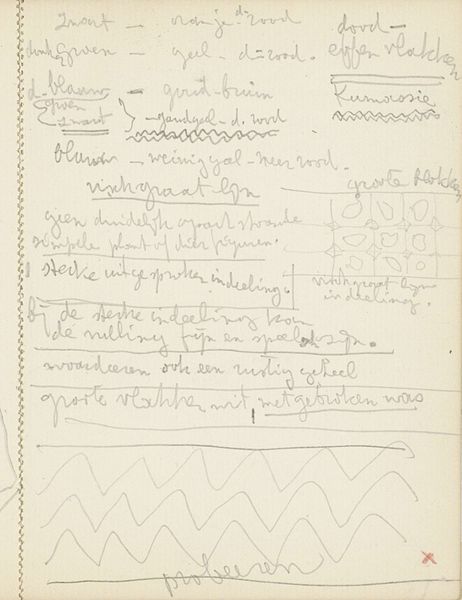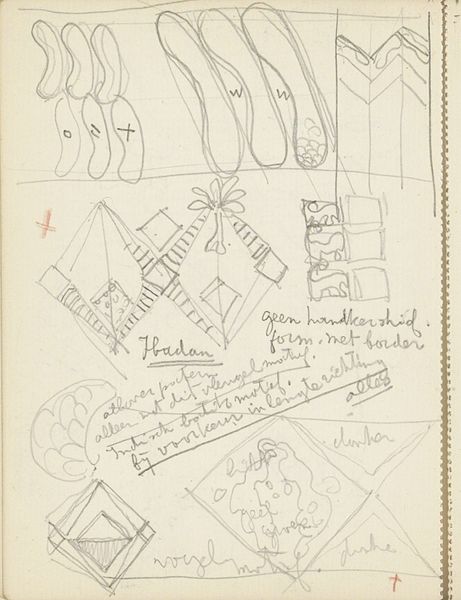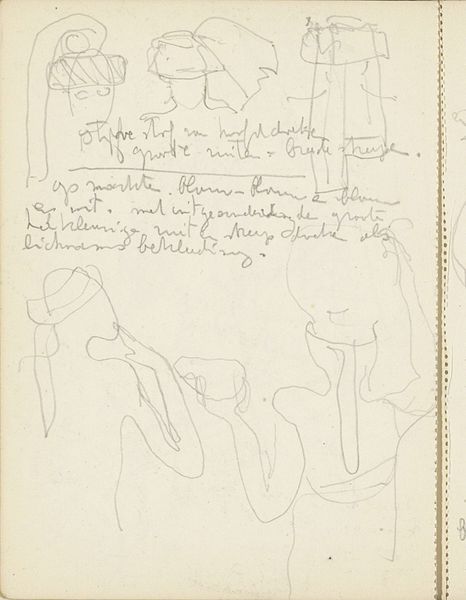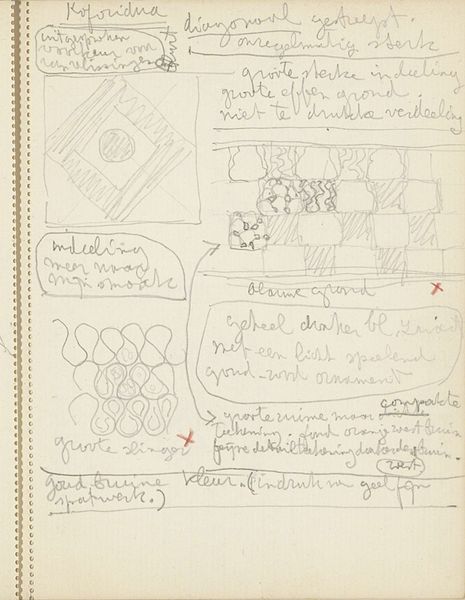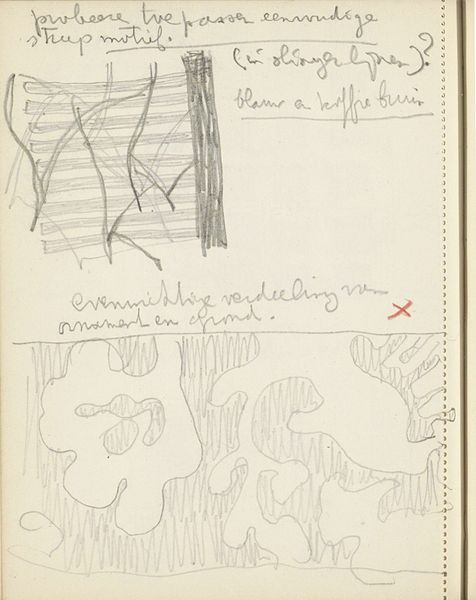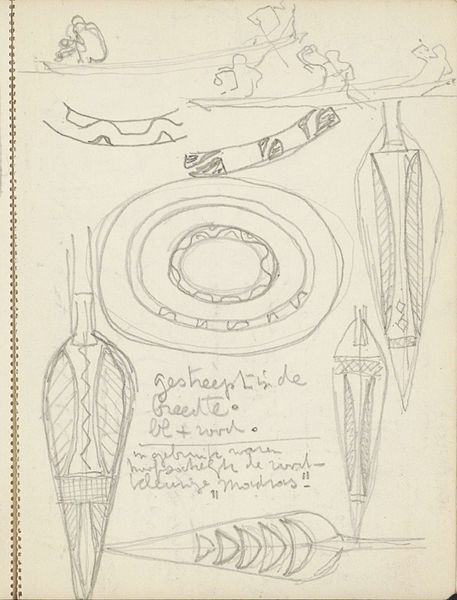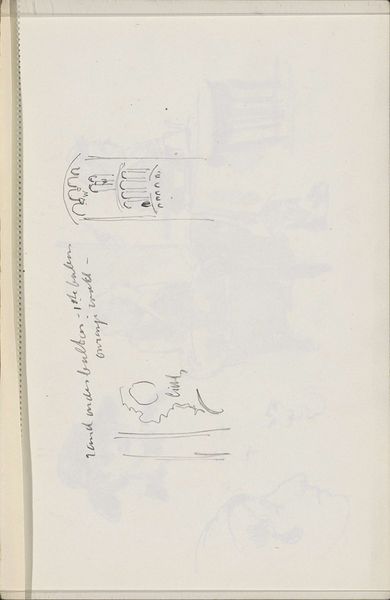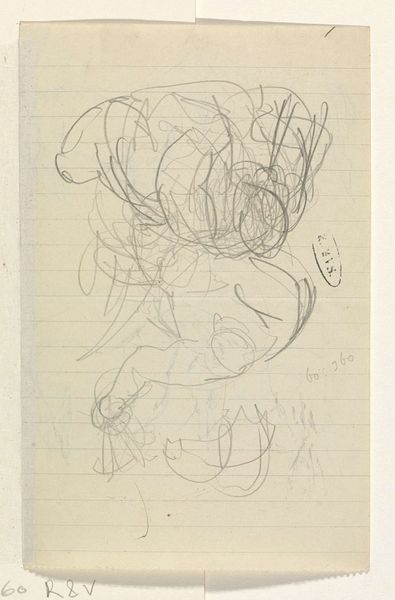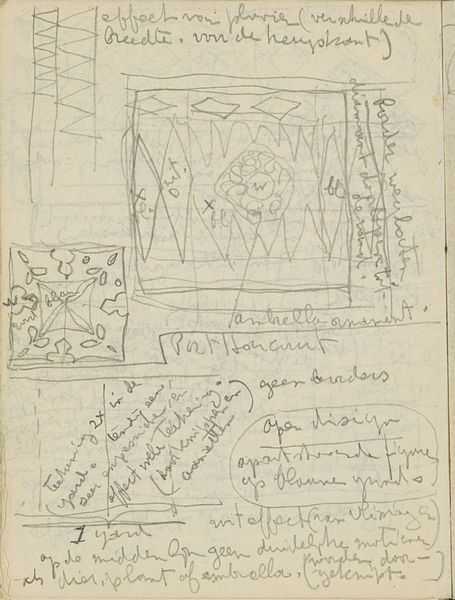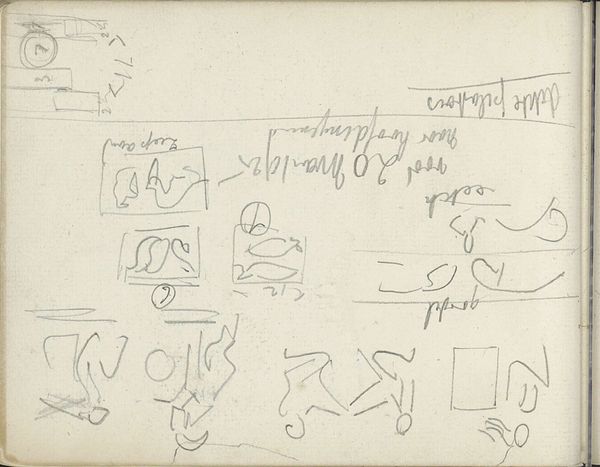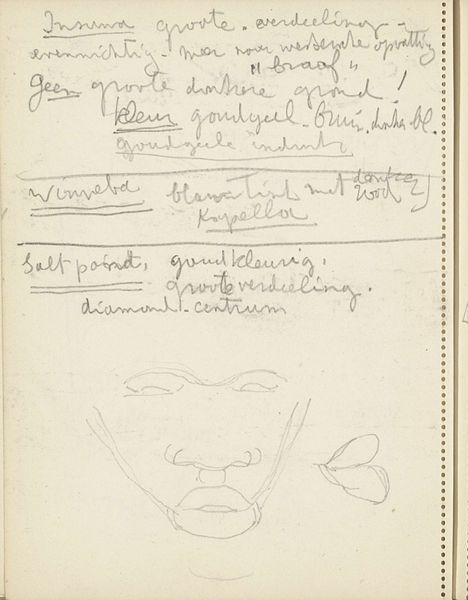
drawing, paper, pencil
#
drawing
#
paper
#
personal sketchbook
#
geometric
#
pencil
#
decorative-art
Copyright: Rijks Museum: Open Domain
Curator: Here we have “Decorative Patterns and Jewelry,” a pencil drawing on paper currently held at the Rijksmuseum, dating from around 1916 to 1945. What are your initial thoughts? Editor: It feels very intimate, almost like looking over the artist’s shoulder at a private sketchbook page. There’s a certain quiet energy in the tentative lines. Curator: Exactly! Observe the interplay of these lines – how they construct both geometric forms and suggested adornments. Note the handwritten notes, seemingly color suggestions, or perhaps directions. How might we understand such notation, from a formal perspective? Editor: I see it adding to the artwork's completeness. This drawing contains linear hatching which may suggest a third dimension, alongside written directives which are seemingly color suggestions, enriching the image and highlighting the method through which the objects' design might develop. But it feels almost haphazard, defying traditional symmetry in favor of capturing an immediate thought. Curator: And that’s crucial. This isn’t a finished piece intended for immediate consumption. It represents an exploration of design motifs, a testing of ideas related to decorative arts. We see sketches of potential jewelry designs mingled with patterns and seemingly random annotations. What does this juxtaposition suggest about the artistic milieu of the period? Editor: Considering the socio-political context, this era experienced vast industrial expansion, directly affecting design as it manifested in applied and decorative arts. Here we get a glimpse of the raw creative process, perhaps for a jewelry maker contemplating new styles in the face of changing societal demands and available technologies. It provides historical insight and invites further cultural questions. Curator: I agree. This sketchbook page offers invaluable insight not only into the artist's technique and vision but into the cultural dynamics influencing the aesthetics of this artwork, showcasing how the role of museums has allowed audiences to develop and discover design within historic pieces such as this one. Editor: Indeed. Spending this time looking over its elements only enriches its appeal. What seemed, at first glance, to be some random notes evolved to become what allows audiences the experience of diving into its own aesthetic dimension, making it even more attractive and pleasing.
Comments
No comments
Be the first to comment and join the conversation on the ultimate creative platform.
